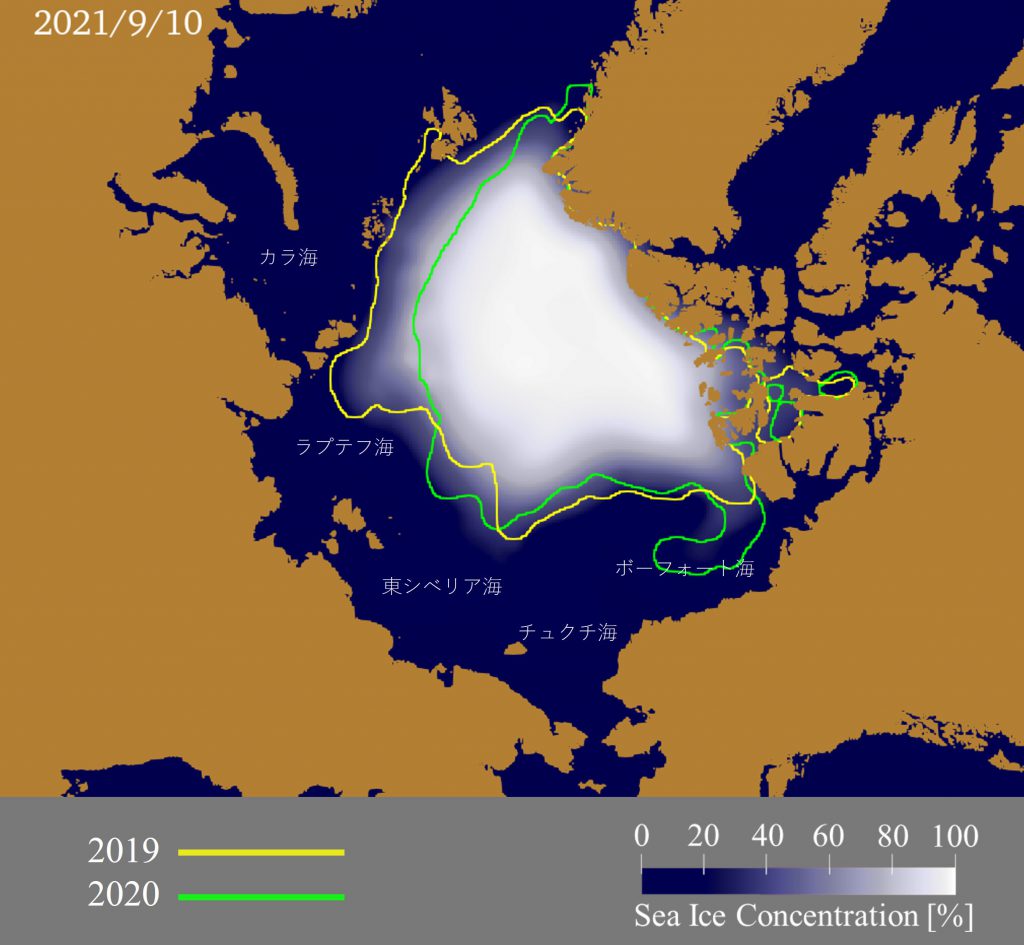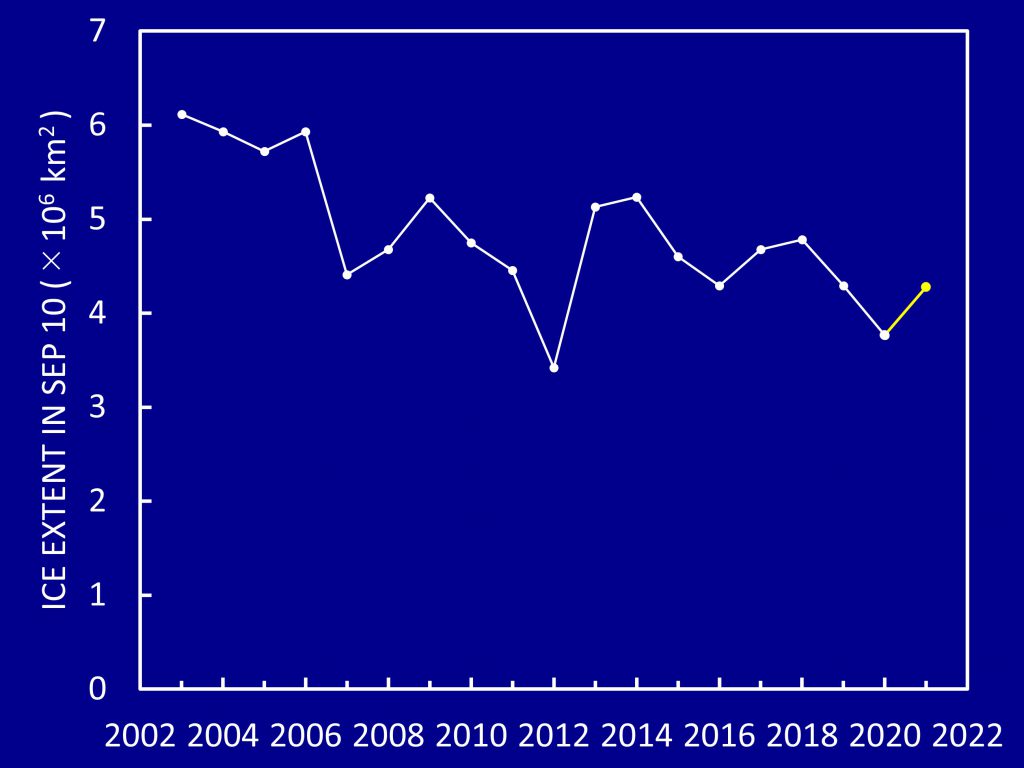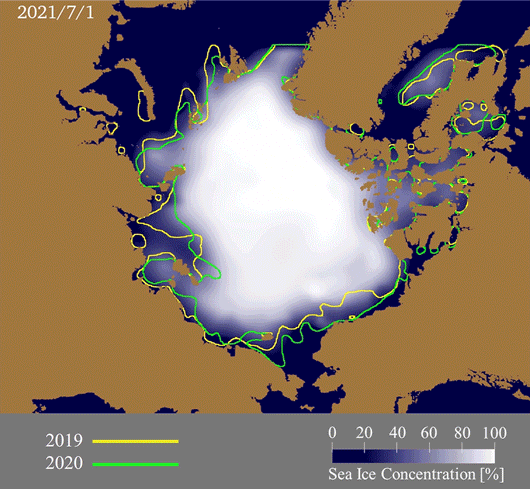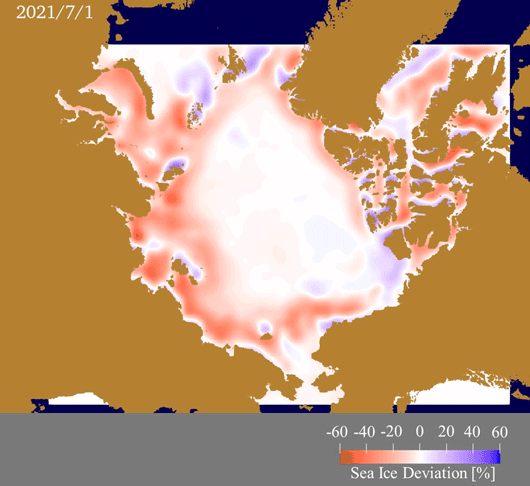2021 Third report
Arctic Sea Ice Information Center, Noriaki KIMURA (Atmosphere and Ocean Research Institute, The University of Tokyo)

- Sea ice extent minimum will be about 4.28 million square kilometers in September, almost the same size as in 2019, larger than 2021.
- The Northern Sea Route will open on around August 2, and the Canadian side except for Canadian archipelago will open on around July 15.
- Old sea ice will remain off Alaska in the Beaufort sea.


Yellow and green lines indicate the ice edge of the same day for 2019 and 2020.

In this third report, we used the same method as in the first and second reports to track the sea ice movement after December, with extended tracking period to the end of June. We have also considered the sea ice age distribution calculated for the past four years from the end of June using the method described in “2021 Second report complement”. We applied a multiple regression analysis among sea ice concentration, particle density and ice age, while the first and second reports we used regression between sea ice concentration and particle density which expresses sea ice movement in winter. For more details, please see “2021 Third report complement: Comparison of Sea Ice Forecasts Using Simple Regression and Multiple Regression Analysis”.
The Arctic sea ice extent on September 10, which is the sea ice minimum, is expected to be about 4.28 million square kilometers. This is about the same as in 2019 and larger than in 2020. It is also larger than the 4.18 million square kilometers forecast in the first report and the 4.08 million square kilometers forecast in the second report.
The summer Arctic sea ice extent has been decreasing rapidly in recent decades, with a less significant trend from 2013 to 2019, but a large decrease again in 2020, with the Arctic sea ice extent on September 10 being the second smallest after 2012, at about 3.77 million square kilometers. This year’s sea ice extent is expected to be larger than that of 2020, but will decrease to the third smallest extent ever.
Russian side
Ice cover in the Russian side will retreat slower than in 2020, but faster than in 2019. The Northern Sea Route will open on around August 2, the same date as 2020.
Canadian side
Sea ice from the Chukchi Sea to the Beaufort Sea will retreat with almost same timing as 2019. Sea routes of the Canadian side will open on around July 15. The analysis in this report considering sea ice age suggests that sea ice will remain in the Beaufort sea due to the effect of multi-year ice.
For this prediction, we used the sea ice data from satellite microwave sensors AMSR-E and AMSR2, and the relationship between the winter ice motion and summer ice concentration (Kimura et al., 2013). This forecast considers the long-term trend of sea ice concentration as well as the movement of sea ice during the winter, in the same manner as that of the last year’s work.
Ice prediction map is also available in Arctic Data Archive System (ADS) at National Institute of Polar Research.
If you have any questions about satellite monitoring of the Arctic Ocean, sea ice forecasting, or the forecasting methods used here, please contact the Sea Ice Information Center(sea_ice@nipr.ac.jp)
The sea ice forecast and its basic research were started in GRENE, continued to ArCS Project, and has been conducted in ArCS II Project since 2020.


